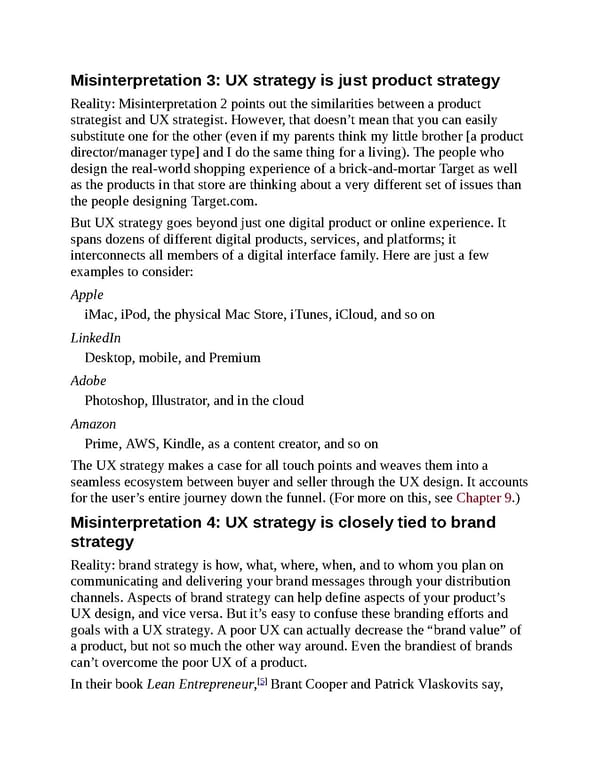Misinterpretation 3: UX strategy is just product strategy Reality: Misinterpretation 2 points out the similarities between a product strategist and UX strategist. However, that doesn’t mean that you can easily substitute one for the other (even if my parents think my little brother [a product director/manager type] and I do the same thing for a living). The people who design the real-world shopping experience of a brick-and-mortar Target as well as the products in that store are thinking about a very different set of issues than the people designing Target.com. But UX strategy goes beyond just one digital product or online experience. It spans dozens of different digital products, services, and platforms; it interconnects all members of a digital interface family. Here are just a few examples to consider: Apple iMac, iPod, the physical Mac Store, iTunes, iCloud, and so on LinkedIn Desktop, mobile, and Premium Adobe Photoshop, Illustrator, and in the cloud Amazon Prime, AWS, Kindle, as a content creator, and so on The UX strategy makes a case for all touch points and weaves them into a seamless ecosystem between buyer and seller through the UX design. It accounts for the user’s entire journey down the funnel. (For more on this, see Chapter 9.) Misinterpretation 4: UX strategy is closely tied to brand strategy Reality: brand strategy is how, what, where, when, and to whom you plan on communicating and delivering your brand messages through your distribution channels. Aspects of brand strategy can help define aspects of your product’s UX design, and vice versa. But it’s easy to confuse these branding efforts and goals with a UX strategy. A poor UX can actually decrease the “brand value” of a product, but not so much the other way around. Even the brandiest of brands can’t overcome the poor UX of a product. [5] In their book Lean Entrepreneur, Brant Cooper and Patrick Vlaskovits say,
 UX Strategy: How to Devise Innovative Digital Products that People Want Page 17 Page 19
UX Strategy: How to Devise Innovative Digital Products that People Want Page 17 Page 19